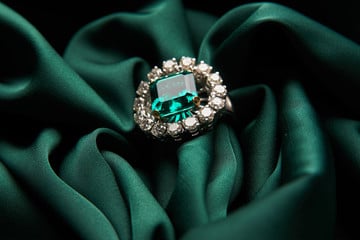What is Sustainable Jewelry?
0 comments
SHOP BY STYLE ✧
SHOP BY SHAPE ✧
![]()
![]()
![]()
![]()
![]()
METAL COLOR ✧
WEDDING BANDS
SHOP BY STYLE ✧
![]()
![]()
![]()
SHOP BY STONE ✧
SHOP BY METAL ✧
JEWELRY FOR THE BIG DAY
NECKLACES ✧
EARRINGS ✧
BRACELETS ✧
Engagement ✧
SHOP BY SHAPE ✧
![]()
![]()
![]()
![]()
![]()
![]()
SHOP BY COLOR ✧
SHOP BY CATEGORY✧

SHOP BY CATEGORY✧
SHOP BY OCCASION✧
SHOP BY PRICE✧

Birthstone Jewelry

In an era where environmental consciousness is becoming increasingly pivotal, the concept of sustainability has permeated various facets of our lives, including the world of fashion and accessories. In recent years, sustainable jewelry has emerged as a conscientious choice for those seeking to adorn themselves with pieces that not only reflect personal style but also align with ethical and ecological values. This article delves into the intricate world of sustainable jewelry, exploring its origins, key principles, and the impact it has on both the environment and the communities involved in its creation.
Sustainable jewelry, at its core, embodies a commitment to minimizing the negative environmental and social impacts associated with traditional jewelry production. It encompasses a range of practices that prioritize ethical sourcing of materials, responsible manufacturing processes, and the well-being of artisans and workers involved in the production chain.
The journey towards sustainability begins with the materials used in jewelry creation. Sustainable jewelry seeks to minimize the environmental footprint by opting for responsibly sourced materials, including metals and gemstones. Ethical sourcing involves selecting materials that are extracted or harvested with minimal environmental impact and without exploiting local communities.

One of the cornerstones of sustainable jewelry is the use of recycled metals. Reclaimed gold, silver, and other metals reduce the demand for new mining, preventing environmental degradation and the associated social issues linked to traditional mining practices.
Sustainable jewelry places a premium on conflict-free gemstones, advocating for stones that have been ethically mined, cut, and traded. This ensures that the profits from these precious gems do not support armed conflict or human rights abuses.
Beyond sourcing, the production processes involved in creating sustainable jewelry play a crucial role in its overall environmental impact. Sustainable brands often adopt eco-friendly manufacturing practices, minimizing waste and energy consumption.

Many sustainable jewelry brands prioritize artisanal craftsmanship, emphasizing handmade pieces over mass production. This not only supports skilled artisans but also reduces the carbon footprint associated with large-scale manufacturing.
Sustainable jewelers explore and employ environmentally friendly techniques such as water recycling, the use of non-toxic chemicals, and energy-efficient production methods to minimize their ecological footprint.
Sustainable jewelry extends its commitment to social responsibility by ensuring fair labor practices, supporting local communities, and fostering transparent supply chains.
Brands committed to sustainability prioritize fair wages and safe working conditions for artisans and workers. This promotes social equity and contributes to the well-being of individuals involved in the production process.


Sustainable jewelry often involves collaboration with local communities, providing economic opportunities and empowering artisans. This creates a positive impact beyond the environmental aspects, fostering social sustainability.
Certifications and transparency are integral components of the sustainable jewelry movement. Various organizations provide certifications to validate the ethical and ecological practices of jewelry brands, allowing consumers to make informed choices.
The RJC is a leading authority in certifying ethical practices within the jewelry industry. Brands adhering to RJC standards are committed to responsible business practices, from sourcing to manufacturing.


Sustainable jewelry brands prioritize transparency in their supply chains, offering consumers insight into the journey of their jewelry from raw materials to finished product. This transparency builds trust and accountability.
In conclusion, sustainable jewelry is more than just a trend; it represents a fundamental shift towards a more ethical and environmentally conscious approach to adornment. By focusing on responsible material sourcing, eco-friendly manufacturing processes, social responsibility, and transparency, sustainable jewelry sets a standard for the future of the industry. As consumers become increasingly aware of the impact of their choices, the demand for sustainable jewelry is likely to grow, fostering positive change in the jewelry landscape and beyond.